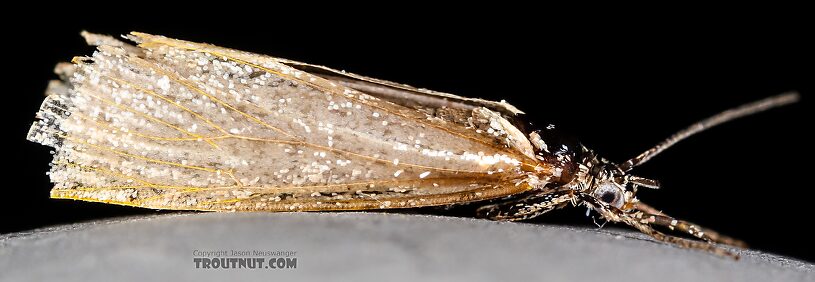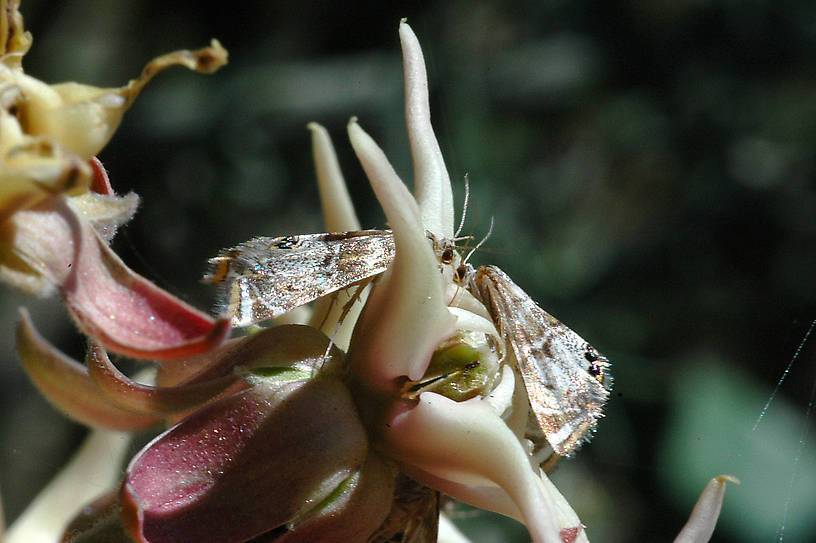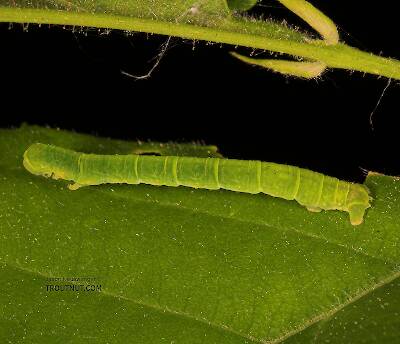
Salmonflies
Pteronarcys californica
The giant Salmonflies of the Western mountains are legendary for their proclivity to elicit consistent dry-fly action and ferocious strikes.
Featured on the forum

Troutnut is a project started in 2003 by salmonid ecologist Jason "Troutnut" Neuswanger to help anglers and
fly tyers unabashedly embrace the entomological side of the sport. Learn more about Troutnut or
support the project for an enhanced experience here.
Insect Order Lepidoptera (Moths)
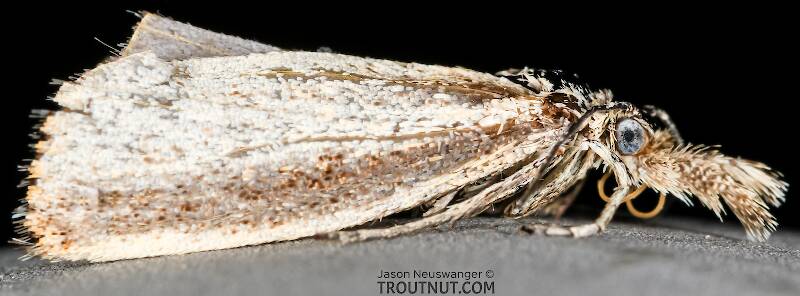
Many species, of course, are not aquatic at all.
Hatching behavior
The pupae of aquatic moths turn into adults underwater in their cocoons, so they are not worth imitating. The emerging adults, swim away from their pupal cocoons and are vulnerable to trout until they crawl or fly away from the water.Egg-Laying behavior
Time of day: Usually dusk or nighttime
Because almost all of the action is at dusk and later, anglers don't realize how prolific these insects really are.
Larva & pupa biology
Diet: Algae and plankton
Shelter type: Some build silk shelters.
Specimens of Moths:
3 Adults
1 Larva
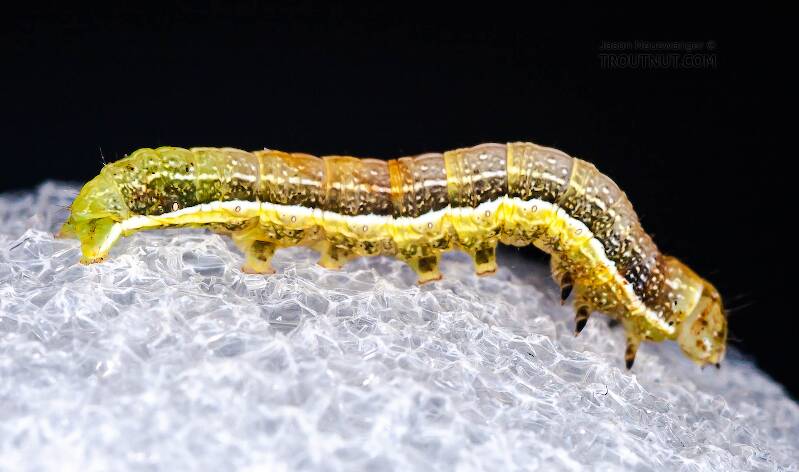
I caught this inchworm lowering itself to the surface of a trout stream from its silk thread. I saw a couple others floating on the surface, so it's likely the trout were familiar with them.
1 Streamside Picture of Moths:
Start a Discussion of Lepidoptera
References
- LaFontaine, Gary. 1981. Caddisflies. The Lyons Press.
- Swisher, Doug and Carl Richards. 2000. Selective Trout. The Lyons Press.
Insect Order Lepidoptera (Moths)
Taxonomy
Family in Lepidoptera
GeometridaeInchworms
1
7
Family in Lepidoptera: Geometridae
12 families (Arctiidae, Cosmopterigidae, Cosmopterigidae, Cossidae, Gelechiidae, Nepticulidae, Nepticulidae, Noctuidae, Olethreutidae, Pyralidae, Sphingidae, and Tortricidae) aren't included.



